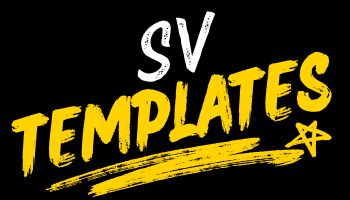TOPIC
Dorothy Miles: Deaf Poet Who Shaped Sign Language

Dorothy Miles was not just a poet. She was a revolution in expression, a fierce advocate for Deaf culture, and a trailblazer who transformed the landscape of sign language poetry. Born Deaf in a world still struggling to understand Deaf identity, she pioneered a movement where the visual, emotional, and linguistic richness of British and American Sign Language found a poetic voice. Through her groundbreaking work, Dorothy Miles not only elevated signed languages into the realm of literary art but also gave generations of Deaf individuals a new way to see, feel, and own their language and culture.
Early Life and Deaf Identity
Dorothy “Dot” Miles was born on August 19, 1931, in North Wales. She became Deaf after contracting cerebrospinal meningitis at the age of eight. While this was a life-altering event, it also marked the beginning of her lifelong connection to the Deaf world.
She attended the Royal School for the Deaf in Manchester, where she was exposed to British Sign Language (BSL), although oralism — a system that discouraged the use of sign language — was still the dominant educational approach of the time. Despite the restrictions, Dorothy became deeply involved in the Deaf community and began exploring sign language not just as a communication tool, but as a potential art form.
Her fascination with language, communication, and human connection would later form the backbone of her creative and educational legacy.
Education in the United States
In the 1950s, Dorothy Miles made a bold decision to move to the United States. She enrolled at Gallaudet University in Washington, D.C. — the only university in the world designed to be barrier-free for Deaf and hard of hearing students. It was at Gallaudet that Dorothy flourished intellectually and creatively.
In the U.S., American Sign Language (ASL) was becoming recognized as a legitimate, complex language, thanks in part to the linguistic research of Dr. William Stokoe. Dorothy embraced ASL and began experimenting with it as a medium for poetry — not simply translating English poems into signs, but composing original poetry in sign language, using its own grammar, rhythm, and visual structure.
She quickly became a well-known figure in Deaf poetry circles in the U.S., blending artistry with activism.
Inventing a New Poetic Language
Dorothy Miles was one of the first poets to create original poetry in both BSL and ASL. Her poems were not mere translations of English verse — they were crafted entirely within the syntax, rhythm, and spatial nuances of sign languages. This approach was revolutionary.
Her poetry utilized facial expressions, body movement, hand shapes, and spatial positioning to create visual metaphors and rhythmic flow. In spoken poetry, sound governs the verse. In sign language poetry, the visual space becomes the stage, and Miles was a master choreographer of this space.
Some of her most acclaimed poems — like “Language for the Eye”, “To a Deaf Child”, and “Dawn” — expressed not only personal and cultural identity but also the emotional richness and aesthetic potential of sign languages.
Her works explored themes of Deaf pride, communication barriers, beauty, and identity. She often challenged the assumptions of hearing people and celebrated the unique worldview of the Deaf community.
Return to the UK and Cultural Impact
In the 1970s, Dorothy Miles returned to the UK and brought with her a wealth of knowledge, inspiration, and new techniques from the American Deaf movement. At the time, BSL was still not widely recognized as a legitimate language, and Deaf culture was marginalized.
She became a central figure in the British Deaf Association (BDA) and worked tirelessly to promote the value of BSL and the cultural identity of Deaf people in Britain. Her charisma and eloquence — both in sign and written English — made her a powerful educator and advocate.
She spearheaded numerous workshops, poetry readings, and television appearances, including involvement in the BBC’s “See Hear” programme, which catered to the Deaf audience.
Dorothy also helped found the National Theatre of the Deaf in the UK, mirroring her earlier experience in the U.S. This was not just a theatrical institution; it was a platform for Deaf expression and a catalyst for Deaf talent across the country.
Teacher, Mentor, and Visionary
Beyond her own artistic output, Dorothy Miles was deeply committed to mentoring young Deaf poets and performers. She encouraged others to explore their own creativity through sign, to develop their own voices, and to see Deafness not as a limitation but as a wellspring of unique expression.
She worked with students across Britain to develop workshops and training programs that helped introduce the concept of sign language as literature. Her vision was a world where Deaf children could see role models who used their native language artistically and publicly — a radical idea at the time.
One of her most enduring legacies is the empowerment of Deaf youth. She gave them permission to see their language as beautiful, their stories as worthy, and their culture as something to be celebrated.
Mental Health and Tragic End
Despite her public success and influence, Dorothy Miles battled with personal struggles. She suffered from bipolar disorder, a condition that took a significant toll on her mental health. Tragically, in 1993, she died by suicide at the age of 61.
Her passing was a heartbreaking moment for the Deaf community, who mourned not just a poet, but a pioneer and a beloved mentor. However, her life’s work continues to inspire and empower people around the world.
Legacy and Recognition
Dorothy Miles’ contributions to Deaf culture, education, and literature are immeasurable. She was posthumously honored with numerous accolades, and her work is now taught in Deaf studies programs across the globe.
Her poems continue to be studied, performed, and celebrated. They live on in classrooms, YouTube videos, community events, and theater performances. Organizations like the Deafinitely Theatre in London and Handprint Theatre often cite her as a foundational influence.
Dorothy Miles’ Enduring Message
She shattered the barriers of linguistic prejudice and introduced the world to the literary and artistic depth of sign language. Her work challenged the assumption that Deaf people were passive recipients of a hearing-dominated culture. Instead, she portrayed the Deaf community as vibrant, creative, and empowered. She taught us that true language is not just about sound — it is about connection, expression, and humanity.
Conclusion
Dorothy Miles was a poet, a cultural pioneer, and a visionary who revolutionized the way we understand sign language and Deaf culture. Through her work, she gave the Deaf community a new artistic identity — one that still reverberates today.
TOPIC
The Art of Thoughtful Giving in the Workplace

In today’s fast-paced corporate environment, fostering a culture of appreciation is more crucial than ever. When organizations choose meaningful acts of recognition, such as personalized corporate gifts, they send a clear message that employees are truly valued for their unique contributions. Not only do these thoughtful gestures elevate individual morale, but they also encourage an environment where team cohesion and productivity thrive. Employees who feel recognized are more likely to go above and beyond in their roles, demonstrating greater commitment to both their work and their colleagues. This ripple effect of positive energy isn’t just felt by the individuals who receive gifts or awards—it uplifts entire teams, reinforcing the importance of shared goals and mutual respect throughout the organization. Put simply, a culture of thoughtful giving helps transform a workplace from a collection of individuals into a dedicated community working towards shared success.
Thoughtful giving is more than just a trendy HR initiative—it’s a proven way to enhance employee experience, improve retention rates, and reinforce positive workplace behaviors. Companies large and small are discovering that investing in genuine appreciation yields returns far beyond what numbers alone can measure. Studies consistently show that employees who receive recognition for their hard work are more engaged, take greater pride in their performance, and are less likely to seek opportunities elsewhere. This retention of skilled talent not only saves companies money in recruitment and training but also preserves valuable institutional knowledge. Moreover, when leaders make a habit of showing appreciation, they set an example for others to follow, embedding gratitude and acknowledgment into the very fabric of the company culture.
Understanding Thoughtful Giving
Thoughtful giving goes far beyond budgeted bonuses or impersonal gift cards. At its core, it involves identifying what makes each employee feel genuinely seen and valued. By choosing individualized gifts and taking the time to acknowledge personal preferences, the act of giving itself turns into a statement of respect and appreciation. This approach is closely linked with increases in employee satisfaction, deeper loyalty, and an emotional connection to the organization’s mission and values. When recognition feels authentic, employees are more likely to internalize a sense of belonging, making them effective ambassadors for the company’s culture and values both within and outside the workplace.
Modern workplaces that practice thoughtful giving understand that recognition must be authentic and meaningful. Whether it’s a custom-engraved trophy to celebrate a work anniversary or a team lunch to honor a project’s completion, the impact is magnified when the gesture aligns with an employee’s interests or life stage. Personalized gifts and tailored acts of thanks underscore that leadership is paying attention to individuals, not just numbers or quotas. Thoughtful giving also offers employees moments of joy that break up the routine of daily work, infusing positive energy into the entire enterprise and reinforcing a sense of shared purpose. Companies that adopt this strategy have found that even small, genuine gestures—such as shoutouts during meetings or personal notes from managers—can yield immense returns in terms of morale and commitment.
 Benefits of Thoughtful Giving
Benefits of Thoughtful Giving
Enhanced employee engagement is essential for fostering a motivated workforce. Employees who feel recognized by leadership experience higher engagement levels and a stronger sense of purpose. Research from the Harvard Business Review indicates that regular acknowledgment from leadership is significantly correlated with sustained employee satisfaction. This increased engagement leads to greater collaboration, knowledge sharing, and innovative problem-solving.
Celebrating individual achievements enhances team dynamics, creating a culture of recognition that promotes a supportive workplace environment. Such a culture reduces workplace friction, enhances open communication, and builds trust, which is vital for long-term organizational success.
Moreover, valued employees are typically more motivated, creative, and committed to exceeding their goals. Recognition serves as a powerful intrinsic motivator, leading to enhanced performance. Teams that emphasize thoughtful recognition consistently outperform others, as members are motivated to excel in pursuit of collective success.
Implementing Thoughtful Giving Strategies
Building a culture of thoughtful giving requires intentionality and a clear strategy. Consider implementing these effective practices to transform employee recognition from a one-time act to a continuous, meaningful process:
- Personalized Recognition: Start with individual preferences and professional achievements. Digital surveys, informal conversations, or feedback platforms can help gather insights into what forms of recognition are most valued by each team member. This data enables managers to tailor their approach, ensuring that each gift or gesture feels special and significant to the recipient.
- Regular Appreciation: Move away from sporadic, once-a-year gestures and opt for ongoing recognition programs. Monthly awards, peer nominations, and surprise tokens of gratitude keep spirits high and foster continuous engagement. Regular recognition not only boosts morale but also helps reinforce the behaviors and values that drive company success, creating a cycle where achievement and appreciation continually reinforce each other.
- Sustainable Choices: Choose gifts and awards that demonstrate a commitment to environmental and social responsibility. Options such as reusable products, eco-friendly materials, or contributions to charitable causes align with modern values and support a company’s sustainability goals. Employees, especially those from younger generations, want to see their employers making conscious decisions that reflect a broader sense of purpose and responsibility beyond profit.
Real-World Examples
Numerous businesses have already reaped the benefits of thoughtful giving. For example, a national retail chain initiated a custom recognition kit program in partnership with a promotional company. By tailoring these kits to highlight individual achievements, the organization experienced a notable 35% increase in employee engagement scores and a measurable improvement in customer satisfaction ratings. Success stories like these are becoming increasingly common as companies seek ways to differentiate themselves in competitive talent markets. Organizations like Google and Salesforce have long demonstrated a commitment to meaningful employee recognition, setting standards industry-wide for how appreciation can transform workplace culture. These companies prioritize tailored recognition initiatives—such as experience-based rewards or professional development opportunities—demonstrating that thoughtful giving is not just about physical gifts, but also about fostering personal and professional growth.
Challenges and Considerations
To effectively recognize employees within budget constraints, small businesses should implement creative and cost-effective recognition programs, such as handwritten notes, digital rewards, and group acknowledgments. Prioritizing sincerity over monetary value is crucial, as genuine gestures elicit positive responses from employees. Consistency in recognition efforts is crucial for building a fair and trustworthy workplace, and all employees should be included in appreciation initiatives to avoid favoritism. Structured programs with clear criteria enhance participation and transparency, minimizing biases. Additionally, recognition methods must be inclusive, catering to diverse cultural norms, age differences, personal preferences, and accessibility needs, thereby promoting a culture that values all contributions and celebrates diversity.
Conclusion
The art of thoughtful giving is a cornerstone of thriving, innovative organizations. By creating intentional moments of gratitude—through recognition, personalized corporate gifts, and sustainable choices—companies not only cultivate a happier, more engaged workforce but also set the stage for increased loyalty and improved results. When every individual feels valued, the entire organization benefits, fostering a culture of excellence that endures over time. Leaders should recognize that implementing thoughtful giving does not require extravagant budgets or elaborate events; rather, it’s about consistently fostering genuine, personalized relationships across all levels of the organization. Over time, these efforts compound, resulting in a workplace where motivation, trust, and innovation flourish, propelling both individuals and the enterprise forward.
TOPIC
VAT in the UAE: Zero-Rating Explained with Examples

Ever thought about how UAE businesses handle Value Added Tax (VAT) and stay competitive? Learning about zero-rating could be a game-changer for your business.
The UAE started charging VAT in 2018. It has a special tax system. This system lets some goods and services be taxed at 0%.
Zero-rating is a special VAT rule. It makes some transactions seem taxable but actually charges 0%. This way, businesses can get back VAT on what they bought. They can then sell their products or services at a good price. A tax expert in Dubai can show which supplies get this special treatment.
We know a lot about zero-rating. We help businesses follow the rules and make smart financial plans. We’ll look at examples, explain important differences, and give tips. This will help entrepreneurs understand their VAT duties in the UAE better.
Understanding Zero-Rated VAT: What It Means for Your Business
Understanding VAT in the UAE is complex. Our reliable accounting services in Dubai help businesses grasp zero-rated supplies. These tax rules are key to your financial strategy.
Zero-rated VAT is a special tax rule. It makes goods and services seem taxable but charges them at 0%. This rule helps businesses stay flexible while following UAE tax laws.
Distinguishing Zero-Rated from Exempt Supplies
Not all VAT rules are the same. Zero-rated and exempt supplies differ a lot. These differences can really affect your business’s money health:
- Zero-rated supplies let you get back all the tax you paid
- Exempt supplies don’t let you get back the tax you paid
- Zero-rated sales look different on VAT returns
Our business advisory services can help you sort out your transactions. This way, you can use tax rules to your advantage.
Impact on VAT Returns and Cash Flow
Zero-rating can be a big win for businesses, like those that export. Knowing how zero-rated sales affect VAT returns helps with money management.
Keeping good records is key for zero-rating claims during audits. Our experts will help you with all the rules. This keeps your business smart with money and follows the law.
Common Zero-Rated Supplies in the UAE with Practical Examples
It’s key for UAE businesses to know about zero-rated supplies. Auditors in UAE check these transactions often. Our guide explains the most common zero-rated supplies for different industries.
Zero-rated supplies let businesses get input tax credits without charging VAT to customers. Audit services in Dubai are vital for understanding these rules.
- Export of Goods: Products sent out of the GCC can get zero-rating. Companies need to keep up with documents like:
- Customs export declarations
- Shipping documents
- Proof of international delivery
- International Services: Professional services to clients outside the GCC might get zero-rating if certain conditions are met
- Transportation Services: International transport, like airlines and shipping, usually gets a zero rating
- Precious Metals: Buying investment-grade gold and silver might get a zero rating
Businesses must keep detailed records of these transactions. Auditors in UAE suggest keeping thorough records for zero-rating claims. Wrong use can lead to big penalties during audits.
Audit services in Dubai help check if businesses are correctly using zero-rating. Getting professional advice is key for following UAE VAT rules well.
When to Consult a VAT Consultant in Dubai for Zero-Rating Compliance
Understanding VAT zero-rating in the UAE can be tough for businesses. Our team at a top auditing company in Dubai guides you on when you need help with VAT rules.
Identifying Complex Zero-Rating Scenarios
Some VAT situations need expert knowledge and a close look. You might want a business setup consultant in Dubai for:
- Mixed supplies with different VAT rules
- International services with unclear supply rules
- Transactions across borders in various places
- Long-term supply deals with changing VAT rules
- Deals with related parties needing exact tax classification
Getting these complex situations wrong can lead to big fines and risks. Our team helps you get through these tricky VAT areas.
Leveraging Professional Audit Support
An experienced auditing company in Dubai offers key help through thorough VAT checks. We do detailed checks on transactions, verify documents, and assess compliance to make sure your zero-rating claims are correct.
Our business setup consultants in Dubai help plan your operations for better VAT handling. This is key for businesses with lots of exports or in sectors with hard zero-rating rules.
Conclusion
Zero-rating in UAE VAT is a smart way for businesses to handle their taxes. As a top VAT consultant in Dubai, we get how VAT rules can affect your money plans.
Our accounting services in Dubai focus on making your VAT work better. It’s all about knowing how to handle zero-rated supplies right. A tax consultant in Dubai can help spot chances and avoid mistakes.
It’s wise for businesses to check their VAT practices. Our team helps from start to finish, including VAT registration and keeping up with rules. Working with us, you can turn VAT into a benefit for your company.
Contact our expert team for help with UAE VAT. We aim to give you solutions that keep your finances safe and help your business grow.
TOPIC
Key Factors to Consider When Filing for Disability Benefits

Applying for disability benefits is a significant step that can impact your financial stability and quality of life. Navigating the process requires a clear understanding of the essential factors that determine claim approval. By being strategic and informed, you can avoid common pitfalls and maximize your likelihood of success. Expert sources, such as Springer Ayeni can provide specialized guidance; however, it’s crucial to understand the foundational elements for yourself before and during your application. When pursuing SSDI, SSI, or long-term disability, key factors include medical evidence, deadlines, and your income and work history. Understanding the process reduces stress and errors, improving approval chances. Each case is unique, so tailor your approach accordingly. For employer-sponsored or ERISA benefits, refer to official U.S. Department of Labor guidelines.
Eligibility Criteria
Before applying, verify that you meet the eligibility criteria defined by your disability plan or the Social Security Administration (SSA). Eligibility generally depends on three main components: the severity of your medical condition, whether it is expected to last at least a year or result in death, and whether your condition prevents you from working at a substantial gainful activity (SGA) level. You may also need a certain number of work credits, depending on your age and work history. Refer to the resources on the SSA website for comprehensive and up-to-date qualification guidelines.
Comprehensive Medical Evidence
Strong medical documentation is the backbone of any disability claim. This includes detailed records from doctors, hospitals, and specialists; diagnostic imaging reports; laboratory results; and written statements or medical opinions from your healthcare providers explaining how your condition limits your ability to function. Lack of adequate medical evidence is a leading reason for denied claims. Stay proactive by ensuring your records are up-to-date and accurately reflect the timeline of your disability. Detailed physician statements about your limitations often carry significant weight during claim reviews.
Accurate Work History
Documenting your work history correctly is crucial, as disability benefits are closely tied to your previous employment. As of June 2024, the SSA now considers the last five years of your work history, rather than the previous fifteen—a change that simplifies the provision of relevant employment details and potentially shortens the evaluation process. Your employment records should include job titles, duties, and skills, as well as the physical and mental demands associated with those jobs. This context allows reviews to assess whether you can perform your past work or adapt to new roles given your restrictions.
Adherence to Treatment Plans
Failing to follow prescribed treatments can undermine your claim. The SSA and most private plans scrutinize compliance as evidence of your willingness to improve your health. Attend all medical appointments, take your medication as directed, and participate in any therapy or rehabilitation recommended by your healthcare providers. If you cannot follow certain aspects of a treatment plan due to side effects, cost, or other valid reasons, make sure your physician clearly documents this to avoid questions about your commitment to recovery.
Timely Application Submission
Delays can have serious consequences for your eligibility for benefits. The SSA pays retroactive benefits only for 12 months before your application date—regardless of when your disability began. Filing promptly gives you the best chance to receive the full amount of benefits you’re eligible for and avoids unnecessary gaps in income. Mark deadlines carefully and start compiling documents as soon as you are unable to work due to disability. Preparing your application early also allows time to gather supporting medical and employment records, reducing the risk of missing crucial information. Submitting a complete and organized application can prevent delays caused by requests for additional documentation. Staying proactive throughout the process demonstrates seriousness and can positively influence how your claim is evaluated.
 Understanding Income Limits
Understanding Income Limits
Income guidelines play a significant role in disability claims. In 2025, if you are not blind, you cannot earn more than $1,620 per month in gross income at the SGA level. For blind applicants, this limit increases to $2,700. Earnings above these thresholds, from employment or self-employment, may disqualify you from receiving benefits, so it’s essential to track your income and understand what counts toward these limits. Even small amounts of unreported income can impact your eligibility, so maintaining accurate records is crucial. Additionally, certain benefits, such as passive income or specific retirement payments, may not be included in the SGA limit, making it essential to understand all sources of income.
Seeking Professional Assistance
Leveraging the expertise of a disability attorney or non-attorney representative can provide significant advantages. These professionals assist in compiling the strongest possible application, help gather and submit documentation, and offer representation if your claim advances to a hearing. Many offer free consultations and work on a contingency fee basis, meaning you pay only if your case succeeds. Experienced representatives also know how to address common reasons for claim denials and can guide you on how to strengthen your evidence. Their insights can save time, reduce errors, and help ensure that your application is presented in the most effective way possible.
Navigating the Appeals Process
Receiving a denial is not the end of your disability claim journey. Statistically, many claims that are initially denied are eventually approved during the appeal process. Be aware of your appeal rights and time limits, as there are strict deadlines for each stage of the process. Understand the four stages of the SSA appeals process: reconsideration, hearing by an administrative law judge, Appeals Council review, and federal court. Being prepared and persistent is essential for success. Keeping detailed records of all communications and submissions during the appeals process can help avoid mistakes and missed deadlines. Maintaining patience and a proactive approach often increases the likelihood of a favorable outcome during each stage of review.
Conclusion
Applying for disability benefits can be complex and often overwhelming, but understanding the key components—from eligibility and medical documentation to income limits and timely submission—greatly improves your chances of success. Each claim is unique, so taking a tailored, proactive approach is essential. Seeking professional guidance, staying organized, and following through with treatment and appeal procedures can make the difference between a denied and an approved claim. By combining careful preparation with persistence, applicants can navigate the process with confidence, ensuring they receive the benefits they are entitled to and achieve financial stability during challenging times.
-

 TOPIC1 month ago
TOPIC1 month agov4holt: Revolutionizing Digital Accessibility
-

 TOPIC4 months ago
TOPIC4 months agoMolex 39850-0500: An In-Depth Overview of a Key Connector Component
-

 TOPIC1 month ago
TOPIC1 month agoMamuka Chinnavadu: An Exploration of Its Significance and Cultural Impact
-

 TOPIC2 months ago
TOPIC2 months agoGessolini: Minimalist Aesthetic Rooted in Texture
-

 TOPIC3 months ago
TOPIC3 months agoArnav Deepaware: A Rising Computer Scientist and Innovator
-

 TOPIC4 months ago
TOPIC4 months agoManguonmienphi: Understanding the Concept and Its Impact
-

 blog2 months ago
blog2 months agoBlack Sea Body Oil: A New Standard in Natural Skincare
-

 TOPIC4 months ago
TOPIC4 months agoNomurano: Lifestyle Aesthetic Shaping Sustainable Simplicity
